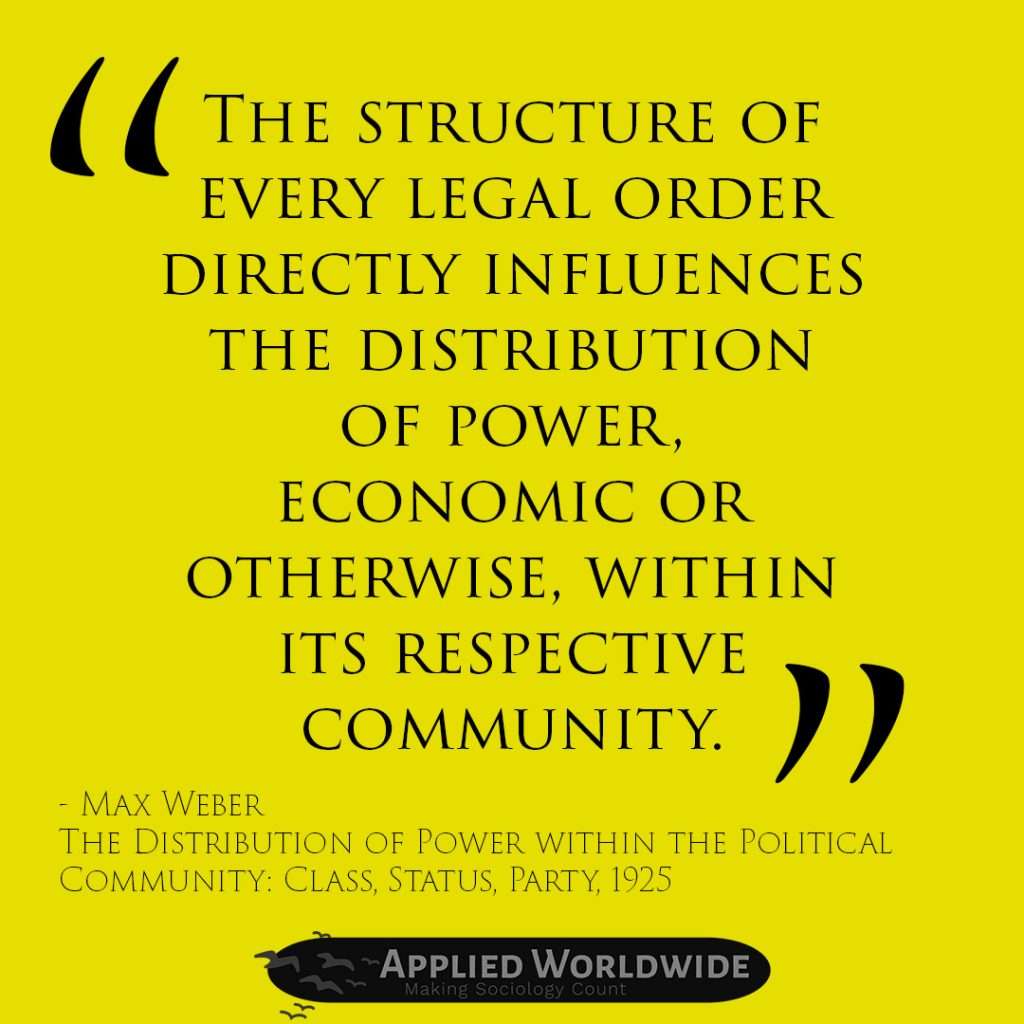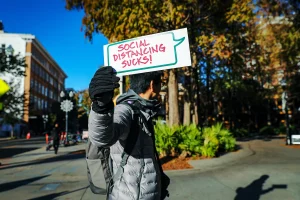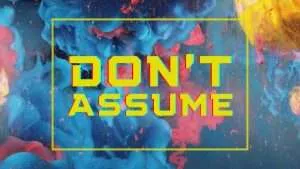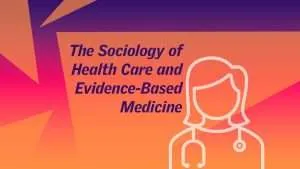India is the vaccine hub of the world. We are the country which was chosen to meet global demands for the life saving elixir and we failed to even meet the vaccination demands in India causing the India vaccine shortage. This failure occurred when the nation was being famished by the second wave of the COVID-19 virus along with a dwindling healthcare structure. To an extent the sociology of vaccination can help us explain India’s vaccine shortage and the government’s role.
The reason partially being the inevitability of a second wave in a densely populated country like India where it is anticipated that one individual can transmit the virus to about 1000 individuals in a period of one month and the second main reason being government negligence and callousness. So, is the India vaccine shortage a tragedy or an administrative failure?
Background on the India Vaccine Shortage
April marked the resurgence of a new wave with cases rising by over 50,000 in one day. In order to counter this burgeoning wave, Prime Minister Narendra Modi initiated a somewhat flaccid project called the Tika Utsav (Vaccine Festival) to curb the vaccine hesitancy in the country. However, as opposed to this project, till 12th April 4 million doses were administered each day but by the end of the month the vaccine administration was reduced to only 2 million doses per day.
As of 10th May 2021, only 2.7% of the citizens are fully vaccinated whereas just about 10% are said to be partially vaccinated. These figures are very low when compared to that of the U.S.A and U.K having 33.8% (full) / 45.8% ( partial) and 25.2% (full) / 52.6% (partially) vaccination rate respectively.
Critique of India’s Vaccination Program
Esteemed English science journal Lancet has published a report on the COVID-19 emergency in India on 8th of May, criticising India’s vaccination programme which had fallen apart at the federal level. The Lancet criticised the government for abruptly shifting vaccine course without discussing the change in policy with the respective states, expanding vaccination to everyone older than 18 years, draining supplies and creating mass confusion and a market for vaccine doses in which states and hospital systems competed.
The Indian vaccination drive became even more complicated when the the government announced that the states are free to buy vaccines from the international market through cut throat competition and global tenders.It is clearly visible how post the first wave of the pandemic and the subsequent mismanagement of the Modi government resulting in the migrant worker exodus and other malfeasance, the central government has now totally decentralised the COVID-19 management upon the individual states, acting as a mere advisory body.
The citizens in India have become the prisoners of a cave as depicted in Plato’s allegory of cave. The citizens like the prisoners are made to believe a false truth to hide the grim reality in India.
Severity of the India Vaccine Shortage
The vaccine shortage is so severe that most states are forced to shut down 60% of its vaccination centres and limit it to the 45 years and above category in spite of pressurizing all individuals above 18 years to register for the vaccination drive. According to many scientific analysts there are three main reasons for vaccine shortage in India:
- Insufficient Capacity
- Lack Of Order
- Size Of Order
Three Reasons for the India Vaccine Shortage
First, the two companies producing vaccines in India, Serum Institute (Covishield) and Bharat Biotech (Covaxin) lack manufacturing capacity to meet such huge demand. In December 2020, the Indian government announced that it aims at vaccinating 300 million Indian by July 2021.
As a person requires two doses to get fully vaccinated, so we need 600 million doses for three hundred million individuals. According to the health ministry, the national average for vaccine wastage was 6.5% in March 2021. If we consider this trend, then we will need 640 million doses in six months. The manufacturing capacity of Serum Institute and Bharat Biotech as of May is 75 million doses per month. However, nearly 40% of the produce are reserved for the COVAX programme.
Now, facing anger and resentment in the home nation, India was forced to shut down its vaccine export meanwhile alienating the European Union who have issued a legal notice to AstraZeneca and Serum Institute over sudden vaccine restrictions. It leaves the Indian government and the Indian vaccine producing companies in horns of dilemma. Hence, many experts suggest that the government’s aim of vaccinating 300 million Indians, collapsed even before it started.
Steps the Indian Government SHOULD have Taken to increase Vaccination in India
The Indian government should have, after the first wave, increased the vaccine production capacity of the companies by placing advance orders. Finance Minister Nirmala Sitaraman in her fiscal budget had allocated nearly 370 billion U.S. dollars for the vaccination drive.
This amount should have been used for giving bulk orders. With advance orders, the companies receive extra cash which they could use to increase capacities and meet demands in the future. The U.S. did something similar under the programme called Operation Warp Speed. Adar Ponawalla from the Serum Institute said that the company didn’t increase its domestic capacity as it did not receive advance orders from the Indian government.
It is clear from here that the government had misinterpreted the second wave, declaring victory over the virus stating that India is in the endgame against the virus.
Religious Ceremonies and Superspreader Events in India
In a sharp criticism of the government strategy, Lancet said despite warnings about the risk of super spreader events like the Kumbh Mela where nearly 3 million worshippers had gathered in the state of Uttarakhand. The government allowed religious festivals to go ahead, drawing millions of people from around the country. Moreover, even during the peak of the second wave, the government was allowed to conduct elaborate elections in 5 states consisting of about 60 million individuals, leading to a further upsurge of cases.
Lancet predicted that India could see a staggering 1 million deaths from COVID-19 by August 1,If that outcome were to happen, Prime Minister Modi would be responsible for presiding over a self-inflicted national catastrophe. The science journal said that India must now restructure it’s response while the crisis rages. “The success of that effort will depend on the government owning up to its mistakes, providing responsible leadership and transparency and implementing a public health response that has science at its heart.”
Lancet said that the “botched vaccination” campaign must be rationalised and implemented speedily. For this, it should increase the vaccine supply and set up a distribution campaign that can lower not just urban but also rural and poorer citizens. The sad part is that denials and lies continue. Inaugurating a number of blood donation camps on 27 April, Dr. Harsh Vardhan said that India “is better prepared in 2021 to beat the pandemic compared to 2020.”
Such statements fly in the face of the daily reality faced by hundreds of thousands of Indians struggling for even the most basic medical care or even a dignified death. Modi’s action in attempting to stifle criticism and open discussion during the crisis are inexcusable.
Sociology Related to the India Vaccine Shortage
The defence that the government is not responsible for the present crisis has consequences for India’s democracy and some dictators also possess this personal appeal that Max Weber identified with a charismatic leader. Subjects of such a dictator may believe that the leader has special ability or authority and may be willing to submit to his or her authority.

The relatively short history of social sciences has been heavily impregnated by uneasy yet pervasive relations with various forms of dictatorship. Modern dictatorships have taken very different forms and have had various ideological inspirations, so that an unique definition or a set of common features might hardly be formulated.
However, a dictatorship can negatively be defined as a form of government that excludes political pluralism, competition, and prevents citizens from participation in decision-making. Power is often concentrated in the hands of an individual, a group of individuals (i.e.a junta), or a single party (merged with the State apparatus).
Along with other recurrent features (cult of personality, abuse of individual freedoms, corruption, etc.), a political monopoly constitutes an essential difference between modern dictatorships and liberal democracies. To the extent to which a dictatorship tends to suppress any opposition, any critic, any public deliberation, it gives ground to a largely accepted opinion according to which social sciences can only exist in a democratic society.
Final Thoughts on the India Vaccine Shortage
The way India is governed at the present context is what any sociologist would call an elected autocracy. The world’s largest democracy have been downgraded to a cosmetic democracy with a false projection of India’s republican unity. If mythology is full of tales about heroes who sought to challenge the gods and then paid for their hubris, history is littered with tragic stories of leaders who ignored the warning signs and wilfully led their people into disaster. Modi has made no secret of his visceral dislike for the Nehru-Gandhi dynasty.
Yet, his secret ambition is to be remembered as the architect of 21st century India just as Nehru is remembered as the institution building architect of 20th century India. However, unless he changes his ways, he is more likely to be remembered as an institution derailing, insecure and an autocratic demagogue.
Further Context on India’s Vaccine Shortage
India has been hit hard by the COVID-19 pandemic, with the country recording some of the highest numbers of cases and deaths in the world. The Indian government has been working to ramp up vaccination efforts to control the spread of the virus, but a shortage of vaccines has been a major obstacle in their efforts. In this article, we will explore the reasons for the vaccine shortage in India and its impact on the country.
Demand for Vaccines in India
One of the main reasons for the vaccine shortage in India is the surge in demand for vaccines. India has a population of over 1.3 billion people, and with the rapid spread of the virus, the demand for vaccines has increased significantly. The Indian government initially placed orders for vaccines from the two main vaccine manufacturers in the country, the Serum Institute of India (SII) and Bharat Biotech, but the supply has not been able to keep up with the demand.
Vaccine Production in India
Another factor contributing to the vaccine shortage is the slow pace of vaccine production in India. Despite being the world’s largest vaccine manufacturer, India has been struggling to meet the demand for vaccines due to a lack of raw materials and production capacity. The country is heavily dependent on imports of raw materials from other countries, and the disruption of global supply chains due to the pandemic has led to a shortage of these materials.
Logistical Challenges to Vaccination in India
Additionally, India has been facing logistical challenges in distributing the vaccines. The country has a vast and diverse population, and reaching all the remote areas and ensuring that everyone gets vaccinated has been a challenging task. The Indian government has been working to improve the distribution infrastructure, but it has not been able to keep up with the pace of demand.
The vaccine shortage in India has had a significant impact on the country’s efforts to control the pandemic. The country has seen a sharp rise in COVID-19 cases and deaths, and the healthcare system has been overwhelmed. The shortage of vaccines has also led to a lack of confidence in the government’s ability to manage the crisis, and there have been reports of people struggling to get vaccinated despite being eligible.
Economic Consequences of India’s Vaccine Shortage
The shortage of vaccines has also had economic consequences for India. The country has been in a state of lockdown for a significant part of the pandemic, and the vaccine shortage has prevented the government from reopening the economy fully. This has led to job losses and a slowdown in economic activity, which has had a ripple effect on the country’s economy.
Solutions to India’s Vaccine Shortage
To address the vaccine shortage, the Indian government has taken several measures. The government has placed additional orders for vaccines from both SII and Bharat Biotech, and has also allowed other vaccine manufacturers to produce vaccines in the country. The government has also taken steps to improve the distribution infrastructure, including setting up vaccination centers in remote areas and increasing the number of healthcare workers involved in the vaccination drive.
However, the vaccine shortage in India is still far from being resolved. The government has been criticized for not doing enough to address the issue, and there have been calls for more transparency in the vaccine procurement process. The shortage of vaccines has also highlighted the need for India to increase its domestic production of vaccines and reduce its dependence on imports of raw materials.
Conclusions
In conclusion, the vaccine shortage in India has been a major obstacle in the country’s efforts to control the pandemic. The surge in demand for vaccines, slow production pace, and logistical challenges in distribution have contributed to the shortage. The shortage has had significant economic and healthcare consequences, and the Indian government has taken steps to address the issue. However, more needs to be done to ensure that everyone in the country can get vaccinated and that India can control the spread of the virus.








